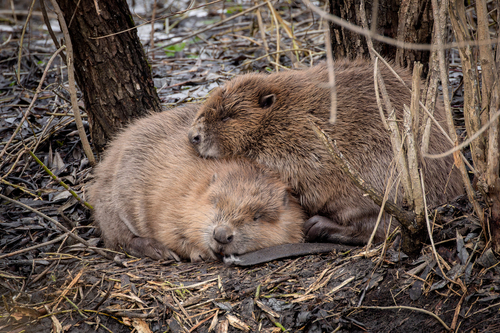
European Beaver
The Eurasian beaver (Castor fiber) is a master builder, crafting intricate dams that transform landscapes and enrich biodiversity. With its iconic flat tail and webbed feet, this industrious rodent thrives in waterways, creating vital habitats and maintaining ecological balance.
7-8 years
Lifespan
21.32 - 23.13 kg
Weight
Length: 61 - 107 cm; Height: 61 - 107 cm
Size
Fawn, Light-Brown
Color
2 years
Age of Sexual Maturity
6 weeks
Age of Weaning
25 mph
Top Speed
Least Concern
Conservation Status
Increasing
Population Trend
Characteristics
Castor fiber, known as the Eurasian beaver, is a large semi-aquatic rodent native to Europe and Asia. It is notable for its robust body, webbed feet, and flat, scaly tail. Beavers are ecosystem engineers, renowned for building dams which create wetlands that provide habitats for diverse species. They have a diet primarily consisting of bark and aquatic plants.
Distribution Range of the European Beaver
Castor fiber, commonly known as the Eurasian beaver, is native to Europe and parts of Asia. Its geographical distribution includes countries such as Norway, Sweden, Finland, Russia, and parts of Central and Eastern Europe. The species has been reintroduced in several Western European countries, including the UK, France, and Germany.
European Beaver's Habitat
Environmental Conditions
The Eurasian beaver typically inhabits freshwater environments such as rivers, streams, lakes, and ponds. It prefers areas with abundant water flow to maintain their lodges and dams. The climate in its natural habitat ranges from temperate to subarctic, depending on the region.
Ecological Niche
Eurasian beavers play a crucial role as ecosystem engineers. They modify their environment by constructing dams and lodges, which create wetland habitats that benefit a wide range of other species. These actions help in water retention, sediment trapping, and biodiversity enhancement. Beavers are herbivorous, primarily feeding on bark, twigs, and aquatic plants.
Copyright @ Nature Style Limited. All Rights Reserved.
 English
English